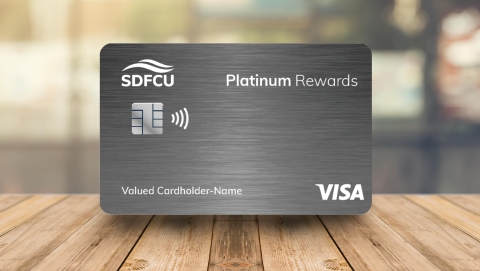As SDFCU members rely more on digital banking, it is our mission to introduce you to a few of the safest ways to protect yourself and your money from online banking fraud and other types of banking scams.
Here is what to watch out for and a few ways to safeguard your online account information.
Vishing: Caller ID Scams
Online banking fraud can start with a simple phone call. For example, scammers may try to steal your money or personal information by using a technique called, “vishing”. Vishing is “the fraudulent practice of making phone calls or leaving voice messages purporting to be from reputable companies in order to induce individuals to reveal personal information, such as bank details and credit card numbers.” The scheme is accomplished through the "spoofing" of legitimate phone numbers.
To ensure the integrity of your personal account information, SDFCU will not call you and ask for your online banking username and password.
Actions to Take:
- Hang up immediately, if you get a call such as this type.
- Do not reply to an email or text message that seems at all suspicious.
- Do not share or provide your online banking username or password with anyone by phone, email and/or text.
Is ‘Password’ Your Password?
It may sound humorous, using the term ‘password” as a password, but weak login credentials only weaken the safety of your personal account data. Make sure you are using a strong password, if it is not strong, simply change the password. Try combining uppercase and lowercase letters with numbers and special characters, such as “%” or “$”.
Symantec, the makers of Norton Anti-Virus products recommend following these tips to help yourself create secure, complex passwords.
Actions to Take:
- Do not use personal information
- Do not use real words
- Do not write them down
- Do not type passwords on devices or networks you do not control
- Create longer passwords
- Modify easy-to-remember phrases
- Change passwords on a regular basis
- Use different passwords on different accounts
Use Multi-Factor Authentication
Another security method to utilize where possible is Multi-Factor Authentication (MFA). MFA increases your security by requiring multiple forms of verification to prove your identity when signing into an account.
Many experts recommended that you use two-factor authentication. With this additional layer of security, you get a one-time code (via text or email) whenever you log into your online account.
Set Up Online Banking Alerts
A way to monitor and stay on top of your account activity is by signing up for Account Alerts. These alerts can notify you of suspicious or unwanted account activity.
Moving forward, take the time to develop a strategy towards staying safe and protecting your online banking information.
Our collection of Learning Hub Security articles offers you helpful tips on safeguarding your personal financial information and avoiding online scams.









